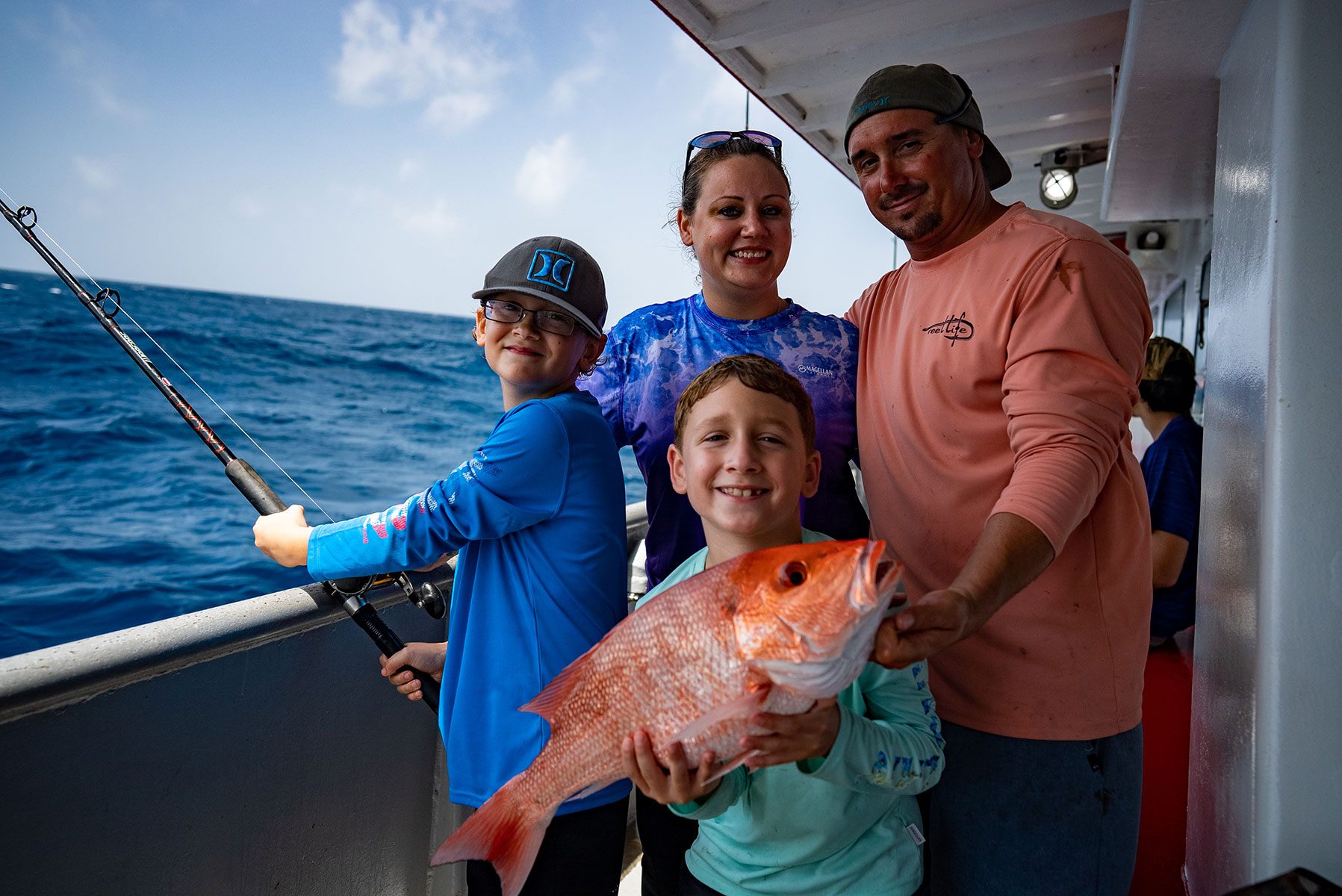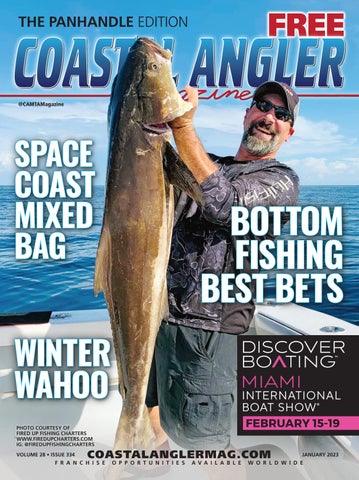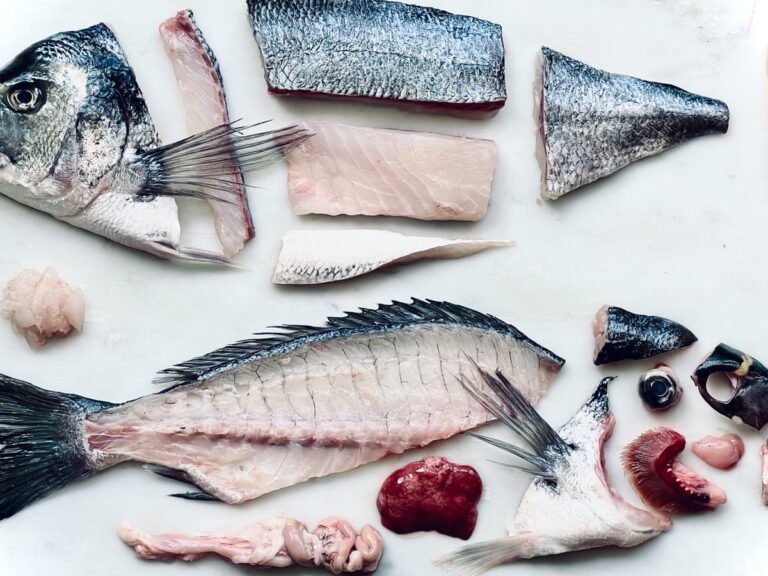The best time for deep sea fishing is during the summer months. During this time, the waters are warmer, which attracts more fish.
Deep sea fishing is a thrilling and challenging activity for those who love the sea and fishing. It is an opportunity to explore the vastness of the ocean and get a chance to catch some of the biggest fish. However, deep sea fishing requires more planning than regular fishing because of the depth and conditions of the ocean.
As an angler, you need to know the best time to go deep sea fishing. The most favorable time for deep sea fishing is during the summer months, from june to september, when the waters are warmer, and there is an abundance of fish. The weather conditions during this time make it easier to navigate the ocean and enjoy a successful fishing trip.

Credit: www.fishermanswharfporta.com
Understanding The Tides And Moon Phases For Deep Sea Fishing
If you’re planning a deep sea fishing trip, you should know that understanding tides and moon phases can make all the difference. Here are some key points to keep in mind:
- Tides and moon phases have a significant impact on deep sea fishing. The gravitational pull of the moon and the sun create tides, which affect the movement of fish and their food sources.
- During a full or new moon, when the gravitational pull is strongest, fish are more active and tend to feed more at night, making nighttime fishing ideal. Alternatively, during a quarter moon phase, when there is less gravitational pull, fish are less active and tend to feed less frequently.
Best And Worst Times For Fishing Based On The Tide And Moon Cycle
Timing is everything when it comes to deep sea fishing. If you don’t plan according to the tide and moon cycle, you could end up with a disappointing catch. Here’s what you need to know:
- The best times for fishing occur during the new moon or full moon phase, as fish are more active and tend to feed more aggressively. During a quarter moon phase, there is less activity and a lower chance of catching fish.
- Outgoing tides, which occur when the tide is receding, are generally the best time to fish, especially during a new or full moon phase. During incoming tides, when the tide is rising, fish tend to move further out to sea, making it more challenging to catch them.
Tips On How To Plan Your Fishing Trip Around The Tides And Moon Phases
Now that you have a better understanding of how tides and moon phases impact deep sea fishing, it’s time to plan your trip accordingly. Here are some tips to help you make the most of your fishing excursion:
- Check the tide and moon phase charts before planning your trip to help you determine the best time to fish.
- Schedule your fishing excursion during the new moon or full moon phase to increase your chances of catching a lot of fish.
- Plan to fish during outgoing tides, which are generally the best time to fish.
- Consider booking a guided fishing trip to help you navigate the best spots and times for fishing.
- Keep in mind that weather conditions can also impact fishing, so be sure to check the forecast beforehand.
Seasonal Patterns And Weather Conditions
Detail The Seasonal Patterns And Weather Conditions That Influence Deep Sea Fishing
Deep sea fishing is an exhilarating activity for fishing enthusiasts who want to catch a big fish. It requires knowledge of weather conditions and seasonal patterns that impact the behavior of fish in deep sea. Here are some key points to help you better understand seasonal patterns and weather conditions that influence deep sea fishing:
- Weather conditions such as wind, rain, and high tides can impact fishing experience.
- Different species of fish have different preferences when it comes to water temperature and depth.
- The fishing season generally runs from spring through to autumn in the northern hemisphere, and from autumn through to spring in the southern hemisphere.
- Winter is usually avoided as fish tend to migrate to warmer waters or go deeper into the sea.
- The summer season is usually the best for deep sea fishing as the water is calmer and the fish are more active.
- Autumn is another good season as the fish are eating more to build up reserves for the winter months.
- Spring is a transitional season with some areas having better fishing opportunities than others.
Optimal Seasons For Deep Sea Fishing Based On Location And Species Of Fish
The optimal seasons for deep sea fishing vary depending on the location and the species of fish one is attempting to catch. Here are some key points:
- In the gulf of mexico, the peak season for deep sea fishing is from april to september when the water temperatures are warmer.
- In the pacific northwest, the peak season is from may to september when the fish are migrating and feeding.
- On the east coast of the united states, the peak season is from june to august when the fish come closer to the shore due to warm temperatures.
- In australia, the peak season is from november to may as the water temperatures are warmer.
Advice On How To Prepare For And Adapt To Different Weather Conditions
Adapting to different weather conditions and being prepared is crucial for an enjoyable and successful deep sea fishing trip. Here are some tips to help you prepare:
- Check weather reports before setting out: Strong winds or heavy rain can impact fishing experience.
- Dress appropriately: Wear layers, as temperatures can drop suddenly at sea.
- Bring sunscreen and a hat: The sun can be intense, even on cloudy days.
- Bring water and snacks: Fishing can be tiring, and adequate hydration and nutrition ensures that you remain energized throughout the day.
Deep sea fishing is an exciting activity that requires careful planning and preparation. By understanding the seasonal patterns and weather conditions, and following the tips outlined above, one can have an enjoyable and successful fishing trip.
Time Of Day And Depth Of Water
Best Time For Deep Sea Fishing: Time Of Day And Depth Of Water
Are you enthusiastic about deep-sea fishing but don’t know the best time of day or the ideal depth to catch your preferred fish? Worry not! In this section, we’ll break down how the timing of your fishing trip can affect your chances of success.
We’ll also give you some insights on how to determine the best depth when targeting your desired fish.
Time Of Day
The ideal time of day for deep sea fishing depends on various factors. Here are some tips to consider:
- Early morning before sunrise and late afternoon after sunset is generally the best time for fishing. Fish prefer dimmer light, and the temperature at these times can be more attractive to them.
- The light level also influences fish behavior. When the sun is high, fish generally swim in deeper waters or seek shelter. However, when the sun is low, they are more active and move up close to the surface.
- Different species of fish have their own daily habits. Knowing what time they feed is crucial in your fishing adventure. For instance, tuna, mahi-mahi, and sailfish tend to feed more aggressively in the morning, while marlin feeds mainly in the afternoon or during cloudy days.
Depth Of Water
The depth of water is another critical factor when fishing. Keep in mind that different types of fish live at different depths; that’s why you should know the right depth to catch your preferred fish. Here are some tips to help you determine the ideal depth:
- Use a fish finder to determine the depth of water. This tool can provide you with valuable information about where to find different types of fish, and at what depth to find them.
- Trolling is an effective fishing method, especially when you want to target a certain fish species. You can regulate your trolling depth by putting a downrigger or altering the weight in your lure.
- Consider the water temperature. Fish tend to follow the water temperature gradient. This means that they move to deeper or shallower water to find the temperature range they prefer. For example, during summer, fish may be in deeper water to seek cooler temperatures.
The best time and depth for deep sea fishing are crucial in determining your fishing success. Consider the time of day when different fish species are active and adjust the depth of your fishing line according to the temperature and the preferred habitat of your desired fish.
With these insights, you should be well on your way to a successful deep-sea fishing experience. Happy fishing!
Conclusion
Whether you’re a seasoned angler or just looking for a new challenge, deep sea fishing is an experience like no other. The best time for this adventure depends on a variety of factors, including the location, weather, and seasonal migration patterns of the fish.
From the winter months to the middle of summer, there’s a season for every type of catch. It’s important to do your research before booking a trip, as fishing conditions can vary greatly depending on the time of year. Regardless of when you choose to go, one thing is for sure: deep sea fishing is an unforgettable adventure that will leave you with memories to last a lifetime.
So gather your friends and family, pack your sunscreen and sense of adventure, and get ready to experience the thrill of pulling in a big catch in the open ocean.





